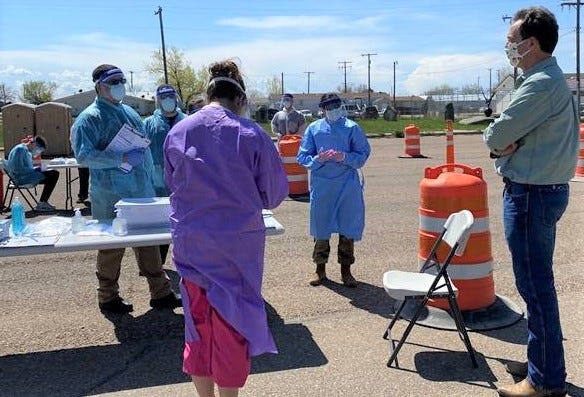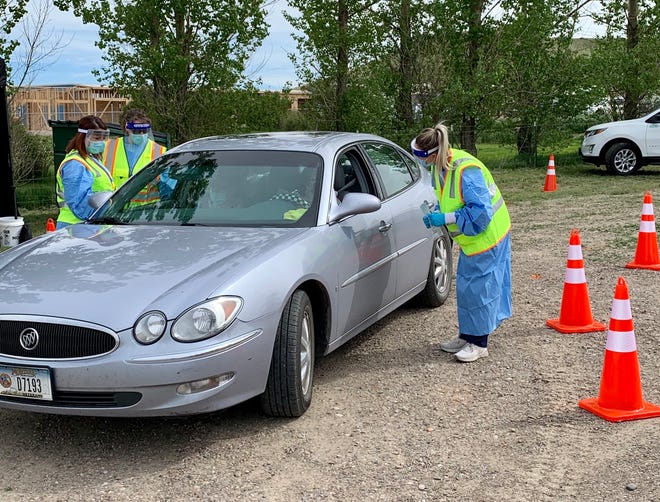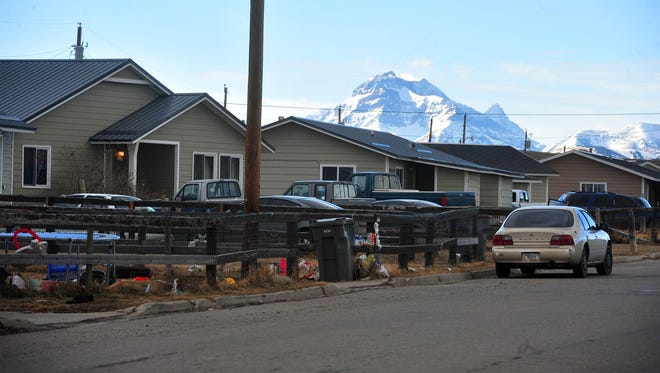COVID-19 has ravaged minority communities worldwide, and Native American tribes in Montana have been no exception.
Though tribes implemented stricter safety protocols than the state, including curfews, fines and extended closures, the respiratory disease has crept into Indigenous communities.
Native Americans account for 6.6% of Montana's population, yet they comprise 17% of the state's total COVID-19 cases and 32% of deaths from the virus, according to a July 24 Department of Public Health and Human Services report. The majority of the deaths have been tribal members of the Crow Nation, which reported its sixth death on July 28. Twelve percent of Native Americans with COVID-19 required hospitalization, compared to 7% of their white counterparts.
But these disparities are not random.
Rather, they are a product of long-term disinvestment, the consequences of which transcend generations.
"Due to a long history of racist public policies, ongoing settler colonialism, and underinvestment, Montanans who are American Indian disproportionately experience underlying health conditions and economic challenges that heighten the risk of the pandemic," reads a June Montana Budget and Policy Center report.
Native Americans are more likely than their white counterparts to suffer from pre-existing conditions, like diabetes, cancer or heart disease, which can exacerbate COVID-19 symptoms.
Camille Stein, public relations officer for the Fort Belknap Indian Community, said that before European contact, Native Americans were some of the "healthiest people in the world."

"We had sophisticated agricultural practices and medicinal practices. But when our ability to hunt was limited, it affected our health. Now, we often live in rural places, where we don't have as much access to healthy foods and groceries," she said.
Excluding a small convenience store, Stein said residents of the southern part of the Fort Belknap Indian Reservation would have to drive 80 miles to Havre for groceries.
The Fort Belknap Reservation spans portions of Blaine County, which had two active COVID-19 cases as of Tuesday and Phillips County, which has had zero cases. But Hill County, where Havre is located, had 22 active cases on Tuesday. Stein said it's not only expensive for residents to drive far distances for groceries, but it's also risky to leave town, as the likelihood of exposure is increased.
Such is reality for many Native Americans in Montana. In 2014, the U.S. Department of Agriculture found that six of Montana's seven reservations qualified as "food deserts," meaning residents had to travel to access fresh food.
Though members of some federally recognized tribes have access to Indian Health Service (IHS) medical care, many argue the agency is underfunded.
The National Congress of American Indians has said hospitals and centers for tribes are overcrowded and unsafe and have outdated facilities and medical equipment.
“Appropriations for the IHS have never been adequate to meet basic patient needs, and health care is delivered in mostly third-world conditions,” the organization said in a budget request for 2020.
Colleen Hill of the Little Shell Tribe told the Tribune in April that she must drive three and a half hours to the nearest IHS facility. Because it can be dangerous to drive far distances while sick, Hill said she encourages tribal members who need medical care to visit the emergency room and pay out-of-pocket.

Stein said that because the Fort Belknap IHS facility is primarily an out-patient clinic, tribal members faces barriers in receiving adequate health care, as well.
"We don't have the ability to hospitalize someone here," she said. "So, if someone needs serious medical help, they'll have to be airlifted or ambulanced out to Billings, Havre or Great Falls. That's a big challenge for us."
Executive Director of IllumiNative, Crystal Echo Hawk, said that health disparities are a consequence of federal disinvestment.
"The federal government is guilty of chronic underfunding with regards to Native health. The government has legal treaty obligations to tribes around health care, and it’s important when discussing health disparities that we provide context that these are the result of actions and inaction by the federal government," she said.
Due to a lack of affordable housing, increased unemployment and large family structures, many Indigenous people live in crowded homes, which makes social distancing near impossible.
A 2017 U.S. Department of Housing and Urban Development report found that 16% of American Indian and Alaska Native households in tribal areas experience overcrowding (more than one person per room), compared with 2% of all U.S. households. The same report found that 10% of tribal area households had plumbing deficiencies, making handwashing more challenging.

Stein said it's not uncommon for older adults to live with their parents, children and grandchildren.
"Culturally, our families are large and multi-generational. We're really close and we like to help and be around one another, so staying separated isn't always easy," she said.
Responding to these economic and social disparities, the Montana Budget and Policy Center proposed four recommendations to the state to support tribal communities amid the pandemic.

MBPC is a nonprofit organization focused on providing credible and timely research and analysis on budget, tax, and economic issues that impact low- and moderate-income Montana families.